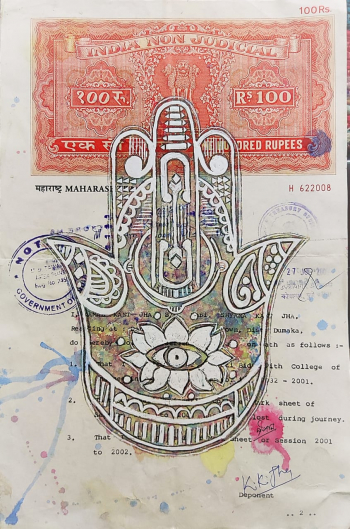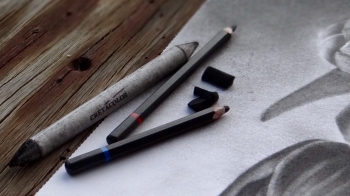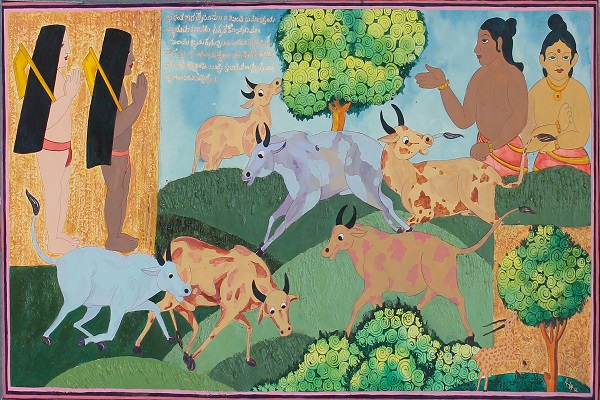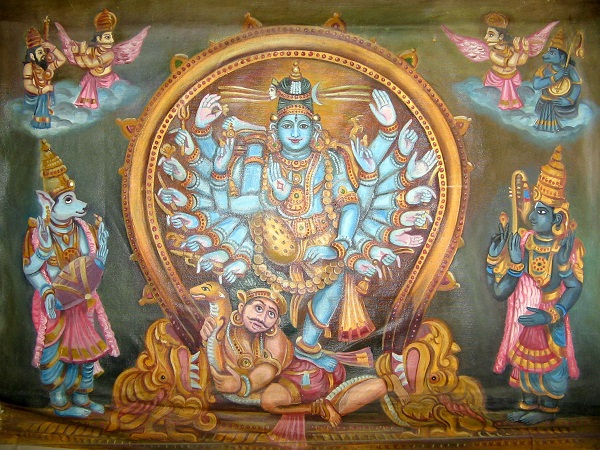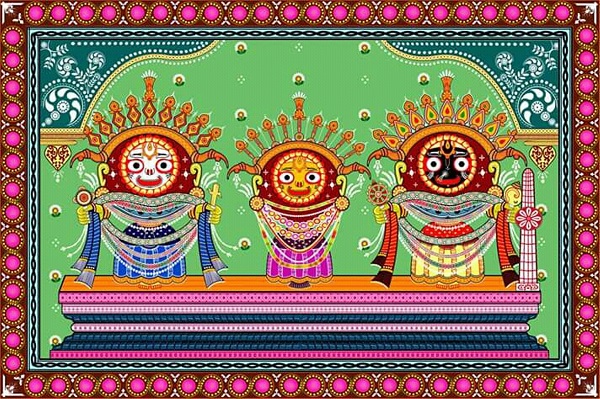
Within the dynamic tapestry of artistic expression, Indian traditional paintings serve as a testament to the enduring cultural heritage that has flourished over centuries. As Pablo Picasso once said, "Art is the lie that enables us to realize the truth." In the intricate strokes and vivid hues of Indian traditional art, we discover a profound reflection of a diverse and ancient culture. How do these timeless paintings capture the essence of India's cultural panorama? Are they more than just visual delights? This blog journey delves into the colors of culture, unveiling the narratives and symbolism of Indian Traditional Paintings. Join us as we explore the kaleidoscopic world where history meets artistry, and every stroke narrates a chapter of the rich heritage that continues to inspire generations.
Dive into the History of traditional Indian paintings
In the intricate strokes and vibrant hues of traditional Indian paintings, there lies a profound connection to history as rich and diverse as the colors on the canvas.
Historical Roots
Indian traditional paintings find their roots in the cave art of prehistoric times, evolving through the eras of the Indus Valley Civilization and the Vedic period. These early expressions, depicting scenes of daily life and religious rituals, laid the foundation for the intricate artistry that followed.
As time unfolded, the Gupta and Maurya empires became patrons of art, nurturing the growth of painting traditions. The Ajanta and Ellora caves stand as living testimonials to the artistic prowess of this period, showcasing murals that reflect a harmonious blend of religious and secular themes.
Evolution and Development over the Centuries
The medieval period ushered in a new chapter, witnessing the rise of regional schools of art. Miniature paintings flourished under the patronage of various kingdoms. Each contributes a distinctive flavor to the artistic landscape. From the detailed elegance of Rajput miniatures to the narrative richness of Mughal paintings, the evolution of Indian traditional paintings became a vibrant tapestry of styles.
The colonial era brought both challenges and opportunities. While traditional ateliers faced disruptions, the fusion of Indian and Western styles gave birth to a unique blend. Artists adapted, incorporating new techniques and materials, creating a bridge between tradition and innovation.
Key Influences and Cultural Contexts
To truly understand Indian traditional paintings, one must grasp the profound influences that shaped them. Religious narratives, mythology, and epics like the Ramayana and Mahabharata have been recurring motifs, providing artists with a rich source of inspiration. The caste system also played a role, with certain styles associated with specific communities.
Cultural contexts, too, played a pivotal role. The vibrant festivals, rituals, and societal norms found expression on canvases, creating a visual chronicle of the times. The courtly traditions of the Mughals, the devotional fervor of the Bhakti movement, and the everyday life of the common people all found their place in the evolving panorama of Indian Traditional Paintings.
Read More: Traditional Paintings: Top 11 Indian Art Forms
The Diverse Palette of Indian Traditional Painting
The Indian Traditional Painting canvas unfolds a narrative woven with a myriad of styles, regional variations, and thematic richness. Let's embark on a journey through the vibrant tapestry of artistic diversity that defines this captivating art form.
Exploration of Different Styles and Schools
Indian Traditional Painting is a treasure trove of artistic styles, each telling a unique story. The intricate details of Mughal miniature paintings transport us to the grandeur of royal courts. On the other hand, the bold strokes of Rajput Paintings evoke a sense of passion and courage. The Tanjore School, with its rich embellishments and vivid colors, brings mythology to life on canvas. Exploring these styles unveils not just artistic techniques but provides a window into the historical and cultural contexts that birthed them.
Regional Variations and Their Unique Characteristics
From the Himalayan foothills to the southern tip of India, the regional variations in traditional painting are as diverse as the landscapes that inspire them. The Kangra School, nestled in the lap of the Himalayas, captures the serenity of the hills in its delicate compositions. Moving south, the vivid narratives of Mysore's painting unfold, showcasing meticulous details and a burst of colors. The unique characteristics of each region's art are a testament to the cultural tapestry that weaves through the subcontinent.
The Diversity in Themes and Subjects
Beyond the strokes and colors, Indian traditional painting is a reflection of the rich tapestry of themes and subjects that have fascinated artists through the ages. From mythological epics to poetic landscapes, each painting tells a story. The Pahari School, for instance, beautifully encapsulates the essence of nature and love in its Kangra and Basohli paintings. Meanwhile, the Kalighat Paintings of Bengal delve into social narratives with wit and satire. The diversity of themes not only showcases artistic versatility but also provides a glimpse into the cultural ethos of different eras.
Indian Traditional Painting is a captivating symphony of styles, regional nuances, and thematic richness. Beyond being mere brushstrokes on canvas, it unfolds as a profound odyssey through the corridors of time. It stands as a triumphant commemoration of diversity, a living testament to the unwavering spirit of creativity that has painted the vibrant tapestry of the Indian subcontinent across the epochs.
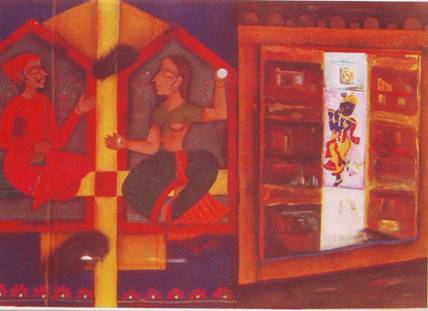
Symbolism and Significance in Indian Traditional Paintings
In Indian Traditional Paintings, every stroke holds a story, and each hue carries a deeper meaning. Let's embark on a journey of discovery as we delve into the profound symbolism intricately woven into these artistic masterpieces.
The Language of Symbols
In the intricate tapestry of Indian Traditional Paintings, symbols speak louder than words. From the lotus symbolizing purity to the peacock representing beauty, this deep dive unveils the rich tapestry of symbols that artists employ to convey layers of meaning. Each stroke becomes a silent narrator, weaving a narrative that transcends time and culture.
Cultural and Religious Tapestry
These paintings are not just pigment on canvas; they are windows into the soul of a culture. From the vibrant festivals depicted to the religious rituals captured, each artwork is a cultural chronicle. Explore the canvas as it becomes a sacred space, portraying the essence of diverse traditions and religious practices. The paintings become a visual pilgrimage, inviting viewers to immerse themselves in the rich cultural mosaic of India.
Narratives Through Visual Elements
Beyond mere images, Indian Paintings are a storytelling medium. Artists, like ancient bards, use visual elements to convey narratives. A careful selection of colors, postures, and even the minutest details becomes a brushstroke in a larger tale. Join us in decoding the visual language – where a subtle glance or a specific posture can narrate sagas of love, courage, and mythology. It's an art form that transcends literacy, allowing stories to be told to all, regardless of written words.
As we explore the symbolism and significance embedded in Indian traditional paintings, we peel back the layers of time, revealing narratives that continue to resonate in the hearts of those who gaze upon these timeless creations.
Contemporary Resonance
Contemporary artists, inspired by the vivid palette of Indian Traditional Painting, are redefining its boundaries. Through innovative techniques and a fresh perspective, they infuse these ageless art forms with modern vitality. The canvas becomes a playground for experimentation. Artists seamlessly blend traditional styles with avant-garde elements, giving birth to a new visual language.
Delving into the intricacies of modern interpretations reveals a fascinating interplay of colors and concepts. Traditional themes are reborn with a contemporary twist, allowing the art to resonate with a diverse audience. The evolution is not merely a departure from tradition but a dynamic dialogue between the old and the new.
Influence on Contemporary Art and Artists
The influence of Indian Traditional Painting on contemporary art is palpable, transcending time and cultural boundaries. Artists, captivated by the rich heritage, incorporate elements into their creations, adding layers of meaning and cultural depth. The echoes of centuries past reverberate in galleries worldwide as the traditional seamlessly intertwines with the contemporary.
This cross-pollination of artistic ideas fosters a vibrant and eclectic art scene. The intricate details and storytelling prowess of Indian Traditional Painting have become a source of inspiration for modern artists seeking to imbue their work with a narrative that transcends mere aesthetics.
Bridging the Gap Between Tradition and Modernity
In the pursuit of artistic innovation, the bridge between tradition and modernity becomes a crucial juncture. Contemporary artists serve as custodians of tradition, preserving the essence while pushing the boundaries of creativity. The dialogue between these two realms creates a symbiotic relationship where each informs and enriches the other.
Developing a connection between the past and present doesn't entail wiping away history. It involves recognizing it as a cornerstone for contemporary creativity. It yields a visual masterpiece where the fibers of tradition seamlessly weave with the avant-garde. Thus creating a narrative that speaks to the shared human experience across time.
Interesting Blog: Traditional Paintings Depicting the Mystical Aura of Lord Shiva
Wrapping Up
In the intricate strokes and vibrant hues of Indian traditional paintings, we've embarked on a journey through the rich tapestry of cultural heritage. From the historical roots that birthed these masterpieces to the diverse palette of styles and themes that define them, each stroke on the canvas carries a story waiting to be unveiled.
Delve deeper into the Colors of Culture with Indian Art Ideas. We present to you an assortment of mesmerizing traditional paintings.
FAQs
How is the art of painting important in Indian culture?
Painting is integral to Indian culture, encapsulating its diverse history and cultural narratives. Serving as a visual language, it preserves traditions, religious beliefs, and societal norms, fostering a profound connection across generations.
What is the traditional concept of Indian painting?
Traditional Indian painting is deeply rooted in the country's rich cultural and historical tapestry. It encompasses various styles and schools that have evolved over centuries. These paintings often draw inspiration from religious narratives, mythology, and everyday life. It portrays a seamless blend of vibrant colors, intricate details, and profound symbolism that reflects the diverse cultural ethos of India.
Why is it called traditional art?
The designation of "traditional art" stems from its deep-rooted connection to cultural histories and practices, passed down through generations. It embodies a continuum of artistic expressions that reflect the values, beliefs, and aesthetic preferences intrinsic to a specific community or society, preserving a timeless link to heritage and legacy.













